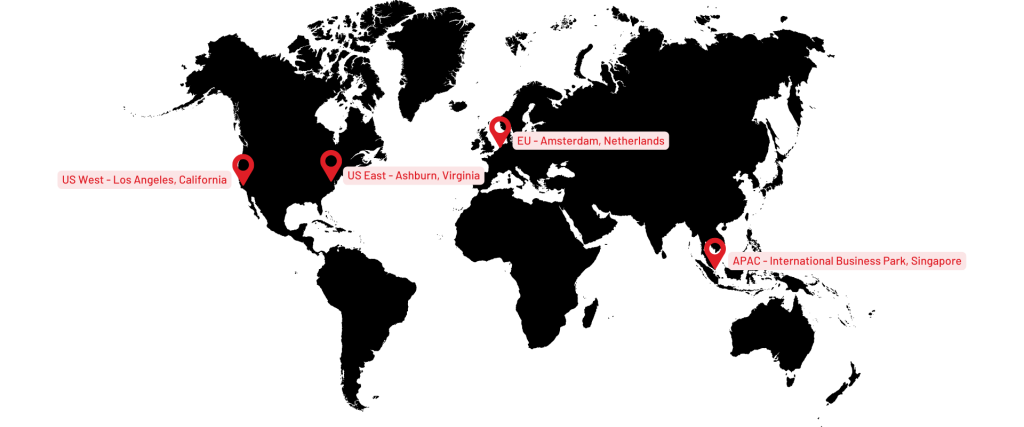Big Data
Ceph can efficiently handle large data sets created by big data analytics projects. Its distributed architecture and parallel processing capabilities help accelerate data analysis tasks, and its built-in redundancy ensures data reliability, which is critical for big data analytics.
High Performance Computing
Ceph can manage massive datasets included in scientific simulations thanks to its distributed file system capabilities and robust performance. Additionally, Ceph’s efficient storage and management capabilities make it an ideal choice for storing and processing the large datasets required by ML and AI models.
Cloud Storage
Ceph storage clusters are a flexible and open source alternative to traditional cloud storage solutions like AWS S3. Its horizontal scalability allows for elasticity to meet growing data demands, while its object-based storage model aligns seamlessly with cloud-native applications.
Cloud Integrated or Bare Metal Integrated
While our Ceph Storage Clusters can be purchased independently, our customers often integrate them into broader infrastructure solutions, including hosted private clouds and dedicated bare metal servers.
Cloud Integrated
- Unified Management: Both Ceph and OpenStack can be managed from a single interface, simplifying operations.
- Flexibility: OpenStack offers a flexible platform for various workloads, including compute, network, and storage.
- Integration: Ceph and OpenStack are designed to work together seamlessly, providing a cohesive solution.
Bare Metal Integrated
- Performance: Bare metal servers offer maximum performance and control.
- Simplicity: Managing bare metal servers is generally simpler than managing a cloud platform.
- Cost-Effectiveness: Bare metal can be cost-effective for specific workloads, especially those requiring high performance and predictable costs.

All our servers are strategically located in Tier III data centers, with two in the United States, one in the Netherlands, and one in Singapore. Our data centers:
- Support compliance with various federal regulations and industry standards.
- Are located near a high concentration of IT, telecommunications, biotechnology, federal government, and international organizations.
- Provide multiple layers of redundancy.
- Are ISO 27001 certified to provide additional data security and privacy.
Schedule a Consultation
Get a deeper assessment and discuss your unique requirements.
You can also reach our team at sales@openmetal.io
Ceph Storage Cluster FAQ
If you need to maximize your usable disk space, we have the following general preference for Replica 2. This choice is based on the following:
We supply only data center grade SATA SSD and NVMe drives. The mean time between failures of a typical hard drive is 300,000 hours. Most recommendations and history of a selection of 3 replicas come from hard drive use cases taking into account this failure rate. Both our SATA SSDs MTBF and our NVMe’s MTBF are 2 million hours. Though failures will certainly still occur, it is roughly 6 times less likely than with an HDD.
When Ceph has been hyper-converged onto 3 servers with a replica level of 3 when you lose one of the 3 members, Ceph can not recover itself out of a degraded state until the lost member is restored or replaced. The data is not at risk since two copies remain but it is now effectively a Replica level of 2. When Ceph has been hyper-converged onto 3 servers with a replica level of 2 when you lose one of the 3 members, Ceph can be set to self-heal by taking any data that has fallen to 1 replica and automatically start the copy process to recover to a replica level of 2. Your data loss danger only occurs during the time when only 1 replica is present.
Disaster recovery processes for data have progressed significantly. This will be based on your specific situation, but if restoring data from backups to production is straightforward and fast, then in the extremely rare case of both of the 2 replicas failing in the degraded period, you will then need to recover from backups.
Usable Ceph disk space savings are significant (estimated, not exact):
HC Small, Replica 3 – 960GB * 3 servers / 3 replicas = 960GB usable
HC Small, Replica 2 – 960GB * 3 servers / 2 replicas = 1440GB usable
HC Standard, Replica 3 – 3.2TB* 3 servers / 3 replicas = 3.2TB usable
HC Standard, Replica 2 – 3.2TB * 3 servers / 2 replicas = 4.8TB usable



































